The hillshader package is a wrapper around the
rayshader and raster packages to create
hillshade relief maps using ray-tracing, and write them to (spatial)
files.
You can install the development version of hillshader with the
remotes package:
remotes::install_github("pierreroudier/hillshader")Below is a quick tutorial of the hillshader
capabilities:
hillshader
functionThe hillshader function is the main function of that
package, and allows to create a hillshade map as a
RasterLayer:
library(raster)
#> Loading required package: sp
library(rayshader)
library(hillshader)Note that the hillshader package includes the
maungawhau and maungawhau_hr datasets. These
are geo-referenced, raster datasets. maungawhau corresponds
to the well-known volcano dataset. It is a 87 × 61
elevation matrix for Maungawhau,
one of the circa 80 volcanoes in the Auckland volcano filed, in
Aotearoa/New Zealand. The maungawhau_hr dataset is a
“high-resolution” version of that dataset, and is a 1 m resolution,
860 × 600 elevation matrix derived from a LiDAR dataset recorded by NZ
Aerial Mapping & Aerial Surveying Limited for Auckland Council, and
distributed
by Land Information New Zealand.
layout(matrix(c(1,2), nrow = 1, ncol = 2))
image(maungawhau, asp = 1, main = "Maungawhau", col = terrain.colors(100))
image(maungawhau_hr, asp = 1, main = "Maungawhau (high-resolution)", col = terrain.colors(100))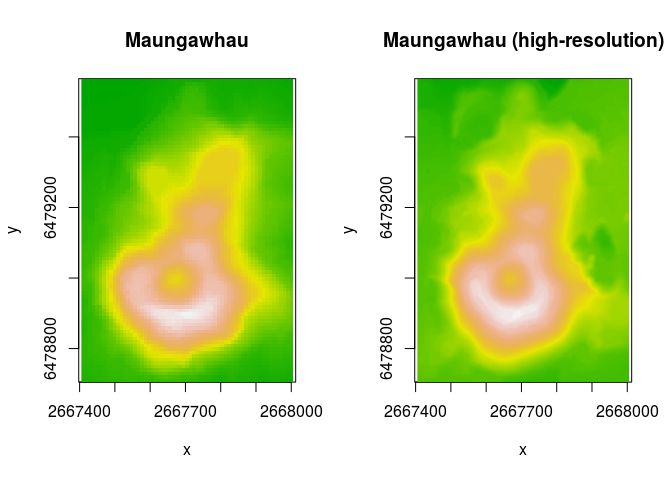
The hillshader function can be simply called on a
elevation raster to generate a hillshade RasterLayer. By
default, the shader used is rayshader::ray_shade, with its
default values.
hs <- hillshader(maungawhau_hr)
plot_map(hs)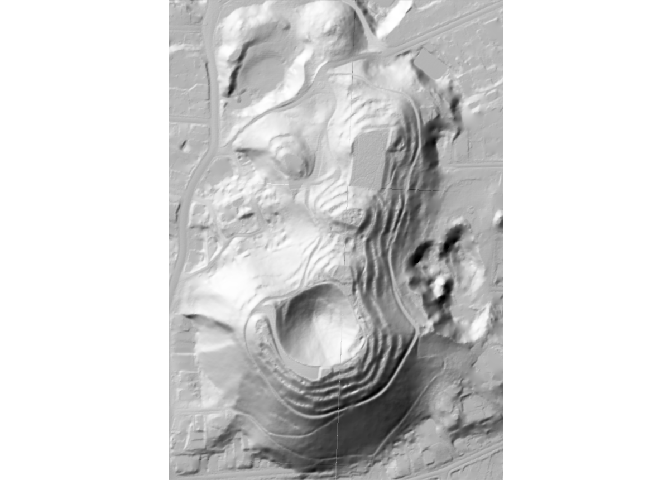
The hillshader function accept a shader
option, with is a list of the successive shader functions to apply to
create the hillshade layer. The accepted values must be
rayshader shader functions (ray_shade,
ambient_shade, lamb_shade), and the order is
important.
hs <- hillshader(
elevation = maungawhau_hr,
shader = c("ray_shade", "ambient_shade")
)
plot_map(hs)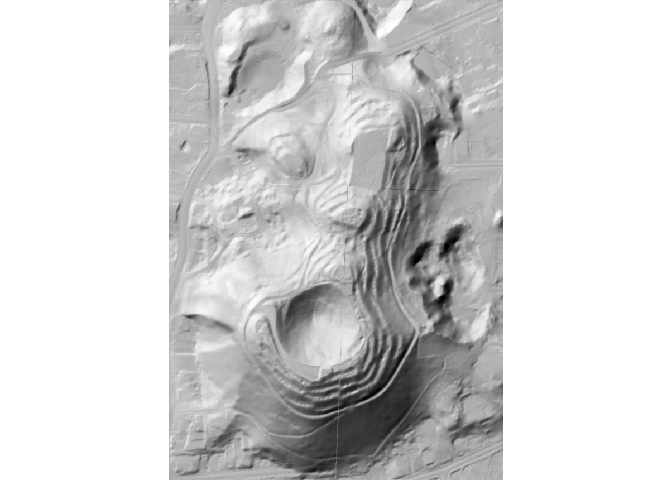
The hillshader function uses the rayshader
options defaults, but other values can be specify and passed as
arguments:
hs <- hillshader(
elevation = maungawhau_hr,
shader = c("ray_shade", "ambient_shade"),
sunangle = 180,
sunaltitude = 25
)
plot_map(hs)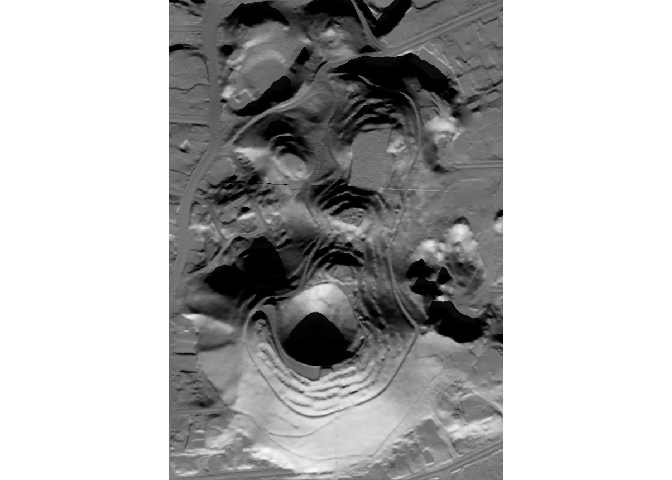
library(raster)
slope <- terrain(maungawhau_hr, out = "slope")
aspect <- terrain(maungawhau_hr, out = "aspect")
hs_raster <- hillShade(
slope,
aspect,
angle = 40,
direction = 325
)
hs_hillshader <- hillshader(
maungawhau_hr,
c("ray_shade", "ambient_shade"),
sunangle = 325,
sunaltitude = 40
)
layout(matrix(c(1,2), nrow = 1, ncol = 2))
image(hs_raster, asp = 1, main = "Classic hillshade", col = grey.colors(100))
image(hs_hillshader, asp = 1, main = "Ray-traced hillshade", col = grey.colors(100))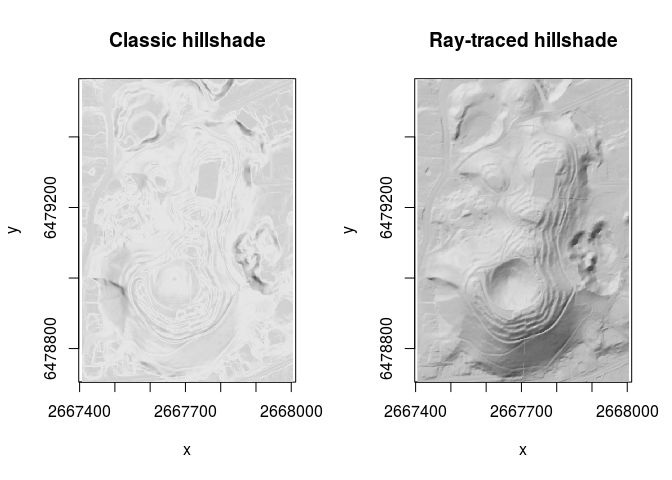
If a filename is passed to hillshader, then
the resulting hillshade layer is saved to file. This is a wrapper around
raster::writeRaster, and options specific to the latter
function can be used.
hillshader(
elevation = maungawhau_hr,
shader = c("ray_shade", "ambient_shade"),
sunangle = 180,
sunaltitude = 25,
filename = "hillshade.tif"
)rayshader pipelinesThe hillshader package provides three functions that can
be used within the rayshader pipelines:
add_shadow_2d: a function that multiplies a shadow map
by another shadow map, a corrected 2D version of
rayshader::add_shadow,matrix_to_raster: a function that converts a matrix
(typically used by the rayshader functions) back to a
RasterLayer, for input into a GIS workflow,write_raster: a function that a hillshade matrix to a
raster file format.library(rayshader)
library(hillshader)
# Create elevation matrix
el_mat <- raster_to_matrix(maungawhau_hr)
el_mat %>%
# Create hillshade layer using
# ray-tracing
ray_shade %>%
# Add ambient shading
add_shadow_2d(
ambient_shade(
heightmap = el_mat
)
) %>%
# Write to GIS file
write_raster(
elevation = maungawhau_hr,
filename = "hillshade.tif"
)